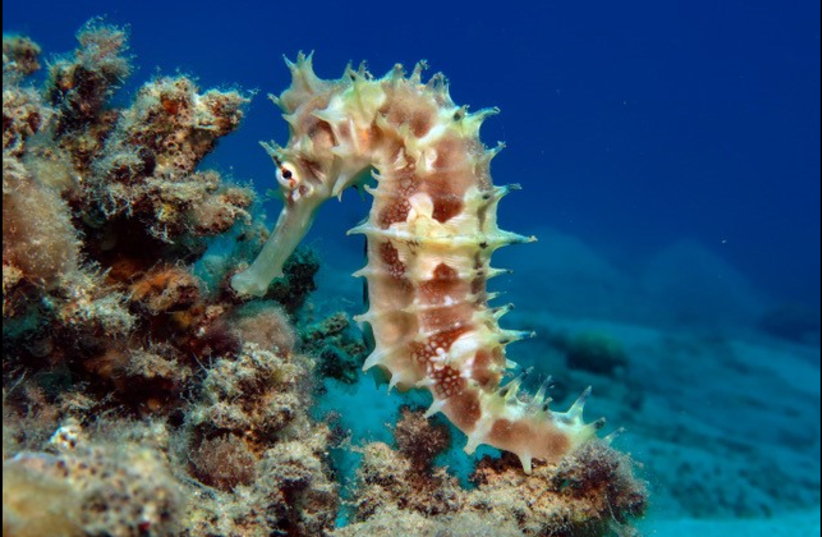Seahorses, despite being relatively poor swimmers, can move their heads at the speed of 0.002 seconds to capture prey. This is part of their incredible preying capability that is explained in a new study Tel Aviv University (TAU) has been conducting.
The study was led by Prof. Roi Holzman and doctoral student Corrine Jacobs of the School of Zoology at the George S. Wise Faculty of Life Sciences and the Steinhardt Museum of Natural History at TAU, and was conducted at the Interuniversity Institute for Marine Sciences in Eilat. The study was published in the peer-reviewed Journal of Experimental Biology.
"I wanted to understand how these unique fish with tiny mouths at the tip of skinny snouts could feed on some of the fastest prey in the oceans", says Jacobs.
Seahorses spend their days anchored with their tail to seaweeds or corals with their head tilted close to their body. When they detect prey, they lift their head at amazing speeds to catch it.
Their body becomes a kind of spring. Prof. Holzman explained that using their back muscles, they stretch an elastic tendon, and use their neck bones as a "trigger" like a crossbow.

The result is faster than the fastest muscle contractions.
Until now, it was not understood how the spring-loaded mechanism enabled seahorses to eat, but this study succeeds in characterizing and quantifying seahorse movement. They did this by photographing their attack at the speed of 4,000 images per second and enabling a laser system for imaging water flows.
This showed that the "crossbow" system serves two purposes: facilitating head movement and generating suction currents. This allows seahorses to capture elusive prey.
"Our study shows that the speed of head movement and suction currents are determined by the length of a seahorse's nose", Prof. Holzman added.
"From the evolutionary aspect, seahorses must choose between a short nose for strong suction and moderate head raising, or a long nose for rapid head raising and weaker suction currents. This choice, of course, corresponds to the available diet: long-nosed species catch smaller, quicker animals whereas short-nosed species catch heavier, more ponderous ones."
